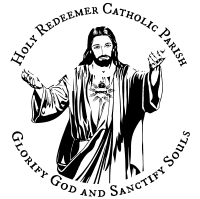The Eucharist, Part 16
Jesus Christ: Yesterday, Today, and Forever ~
Today we continue our twenty part series on the Eucharist. In case you missed the first three, you can find them here. This is in keeping with Archbishop Etienne’s pastoral letter on the Eucharist that you can find here (in case you missed it). Enjoy.
May God Bless You,
Fr. Thomas Nathe
Trent Horn, 20 Answers – The Eucharist. Catholic Answers Press. 2015
Get your own copy from Catholic.com
Question #16:
What kind of bread and wine can be used at Mass?
Christ desires all people to be able to receive his grace through the sacraments of the Church. But a problem arises when people have physical impediments that prevent them from receiving the sacraments, including the Eucharist. For example, those with celiac disease risk severe intestinal damage if they ingest gluten, which is the protein in wheat (as well as barley and rye) that makes processed grains doughy. Likewise, alcoholics who consume even a small amount of wine risk “falling off the wagon” and engaging in their previous alcoholic behaviors. So should the Church offer “gluten-free” Communion wafers and nonalcoholic wine?
According to the Code of Canon Law, “the most holy Eucharistic sacrifice must be offered with bread and with wine in which a little water must be mixed. The bread must be only wheat and recently made so that there is no danger of spoiling. The wine must be natural from the fruit of the vine and not spoiled.” The general instruction of the Roman Missal further elaborates on what is required of the wine that is used at Mass. It says, “The wine for the Eucharistic celebration must be from the fruit of the grapevine (cf. Luke22:18), natural, and unadulterated - that is, without admixture of extraneous substances.” This often means that the wine should be purchased from vendors who have experience with wine used in the liturgy, since ordinary commercial wine may contain foreign substances that spoil it for the Eucharist.
So what can be done for the people who suffer from celiac disease or for communicants or priests who struggle with alcoholism? In 1994, the Congregation for the Doctrine of the Faith released a document called Norms for Use of Low-Gluten Bread and Mustum. The document says, “Low-gluten hosts are valid matter, provided that they contain the amount of gluten sufficient to obtain the confection of bread, that there is no addition of foreign materials and that the procedure for making such hosts is not such as to alter the nature of the substance of the bread.” Regarding wine, the norms say that a priest, when given permission by the bishop, may use mustum in place of normal wine. Mustum is a “fresh juice from grapes or juice preserved by suspending its fermentation (by means of freezing or other methods which do not alter its nature).” It is not “grape juice” but wine whose fermentation has been suspended, thus drastically reducing its alcohol content.
In addition, people who are both allergic to wheat and unable to receive alcohol can always make an act of spiritual communion. St. Thomas Aquinas advocated for the practice, and the Council of Trent approved it. But people who are unable to receive only one of the consecrated species can receive the Eucharist under either the form of bread or the form of wine. This is possible because the consecrated bread and the consecrated wine each fully become Christ’s entire person: body, blood, soul, and divinity. According to the United States Conference of Catholic Bishops:
It should never be construed, therefore, that Communion under the form of bread alone or Communion under the form of wine alone is somehow an incomplete act or that Christ is not fully present to the communicant. The Church’s unchanging teaching from the time of the Fathers through the ages . . . has witnessed to a constant unity of faith in the presence of Christ in both elements.
Lastly, in 1439 the Ecumenical Council of Florence declared that “the body of Christ is truly confected in both unleavened and leavened wheat bread, and priests should confect the body of Christ in either, that is, each priest according to the custom of his Western or Eastern church.” In the West, it is customary to use flat, unleavened bread because that is what Jesus used (and Jews still use today) at Passover. In the East, it is customary to use fluffy, leavened bread because it symbolizes the life of the spirit that is raised through the Eucharist. Both are valid disciplines in their respective rites within the Catholic Church.

